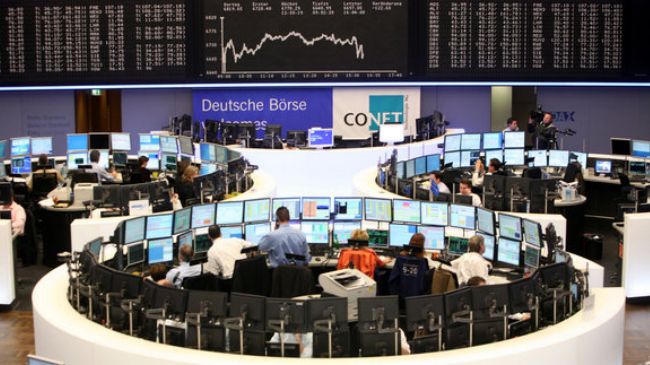by Charles Gave and Louis Gave via Evergreen Gavekal,
With emerging markets in panic mode, investors are bound to be reminded of the enduring observation, first made by a 19th century British businessman named John Mills, that: “Panics do not destroy capital; they merely reveal the extent to which it has been previously destroyed by its betrayal in hopelessly unproductive works.” With that in mind, investors seem happy to link the ongoing emerging market sell-off to either a) China’s large capital misallocation triggered by the 2008-11 credit boom or b) the Federal Reserve’s promise to start tapering last May, followed up now by the real thing. But could there perhaps be another explanation?
As everyone knows, the US dollar is still the world’s reserve currency. If/when the Fed maintains negative real rates for an inordinately long period of time, fewer and fewer people choose to save in US dollar and the currency heads lower. However, the dollar does not go down forever. When the exchange rate becomes between one or two standard deviations undervalued on a purchasing parity basis, it stops falling, if only because foreigners start loading up on US assets (Brazilians buying condos in Miami, Russians in New York city, etc.). Still, as long as real rates in the US are negative, the Fed, for all intents and purposes, is signaling that it does not want the dollar to rise and so it duly remains undervalued—an undervaluation which amounts to a “false price.” Combine this “false price for the currency” with the “false price in the cost of capital,” and the odds of a considerable misallocation of capital go through the roof. As to misallocation due to dollar undervaluation, this chiefly occurs through three mechanisms:
First, a weak dollar leads to a fall in the value of investments made outside of the US. Such investments would have been perfectly profitable but for dollar undervaluation; meanwhile, marginally profitable activities which should have disappeared in the US do not, lowering overall productivity as US “zombie” companies survive.
The second effect is a huge “improvement” in the US trade balance, usually with a lag of roughly three years. Since 2006, the US current account deficit has narrowed by nearly 4 percentage points of US GDP—for countries on the other side of this “improvement,” this adjustment can be painful.
The third effect is more complex. The dollar is the world’s reserve currency, which means the US is the only country in the world which has no foreign trade constraint. However, as we reviewed in our recent book (see Too Different For Comfort), this also means that the US current account deficit needs to grow if global trade is to expand. Indeed, if the US starts to export fewer dollars, then someone, somewhere will find he is unable to finance his trade. The US current account deficit is the monetary base of world trade and a reduction in the US current account deficit is thus equivalent to a massive monetary tightening for the rest of the world. It is for this last reason that we spend so much time monitoring the growth of central bank reserves held at the Fed; for as long as these are expanding, there are few reasons to fear a hiccup in the global trade architecture. However, as soon as central bank reserves start to shrink, then countries running large current account deficits and/or large budget deficits may find pushing more debt through the system challenging. Excluding China, reserves at the Fed are contracting in real terms.
Which brings us to what is unfolding today. The point that we have made for the past six months is that, within the emerging market space, there were clear weak spots but also countries in positions of strength. At times when central bank reserves are shrinking, the weak spots are always the countries running large current account deficits (Turkey, South Africa, Brazil, India...) or attempting to defend fixed, or artificially high, exchange rates in order to cushion the domestic financial industry silly enough to borrow in a foreign currency (Ukraine, Argentina...). Meanwhile, other emerging markets are plodding along, which helps explain why markets as diverse as the Philippines (still recovering from the most powerful Typhoon ever recorded), Indonesia (feeling the brunt of China’s more muted coal demand), Pakistan, Sri Lanka or Vietnam are all up for the year. Even Thailand is flat year to date, despite a violent political crisis.
In the meantime, we are left to ponder whether the years of the Fed following “euthanasia of the rentier” and “beggar thy neighbor” policies are now coming home to roost? After all, it’s all well and good for the Fed to hope for an increase in US “net exports,” but if the end result is to trigger a collapse in global trade (a distinct risk now that the previously fast growing economies of Latin America, Turkey, Ukraine etc., are hitting the wall while China, Indonesia and India slowing down), then it will look as if the Fed will have sown the seeds for the emerging market growth slowdown. In other words: did the Fed just do to the faster growing, deficit-generating, emerging markets what the Bundesbank did to the rest of euroland? If so, then maintaining some exposure to yield instruments in portfolios makes ample sense—if only as protection against growth expectations across emerging markets continuing to be ratcheted down—along with global trade, profits and risk appetite
Copyright © Evergreen Gavekal
















